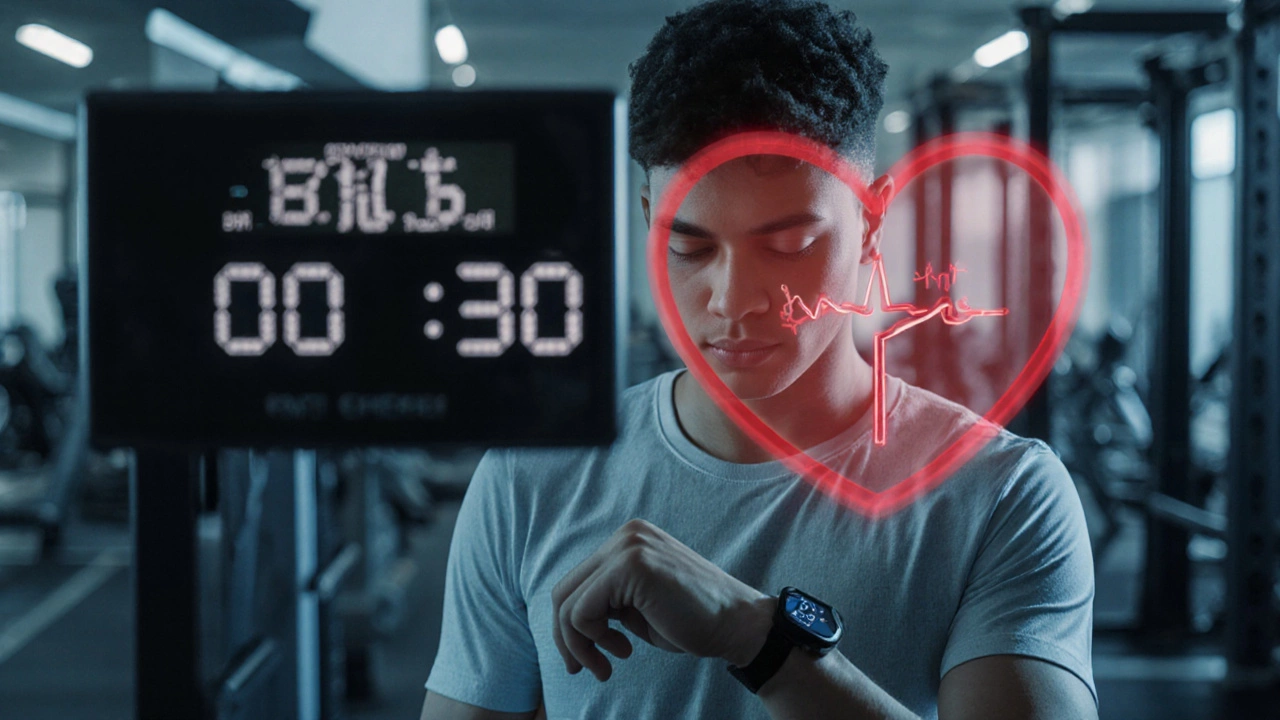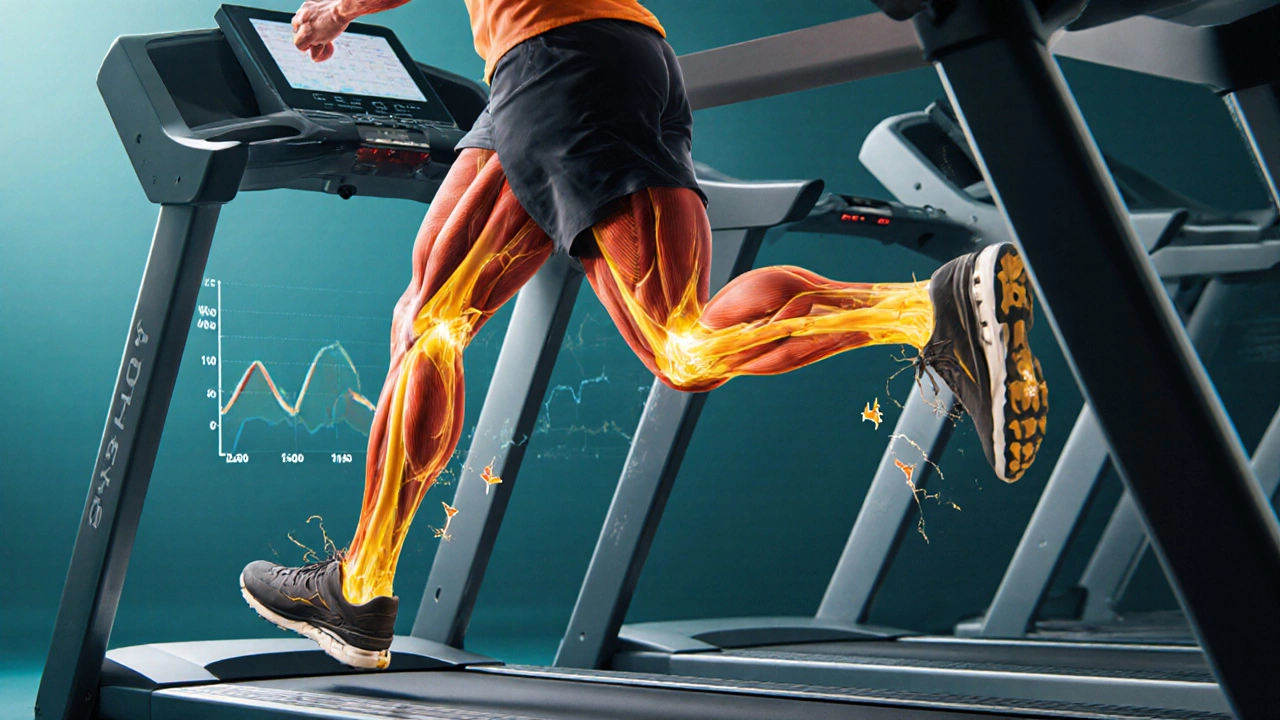HIIT Disadvantages: Risks and Drawbacks Explained
 Oct, 18 2025
Oct, 18 2025
HIIT Safety Assessment Calculator
Personal Risk Assessment
Answer these questions to determine your HIIT safety level
High‑Intensity Interval Training (HIIT) has become the go‑to prescription for people who want quick fitness gains, but the buzz can hide a darker side. Before you strap on those timers, it’s worth digging into the real downsides so you can decide if HIIT truly fits your goals.
What is HIIT?
HIIT is a training method that alternates short bursts of maximal effort with brief recovery periods. Typical sessions last 10-30 minutes, yet they aim to push the heart and muscles past their usual limits.
Why Knowing the Drawbacks Matters
Understanding the risks helps you tailor workouts, avoid injury, and keep progress sustainable. Below are the most common disadvantages that pop up in research, personal trainer reports, and real‑world experience.
Cardiovascular Strain
Cardiovascular system stress is the first red flag. HIIT spikes heart rate to near‑maximum levels, which can be dangerous for people with hidden heart conditions. A 2023 meta‑analysis of 48 trials found a 1.8 % incidence of cardiac events among participants over 45 who performed HIIT without prior medical clearance.
Musculoskeletal Stress and Injury Risk
Because the work intervals demand maximal force, joints and connective tissue take a beating. Studies report a 30 % higher rate of sprains, strains, and tendonitis compared with moderate‑intensity steady‑state cardio. The risk spikes when the same movement pattern is repeated without variation - think endless sprint repeats on a treadmill.
Hormonal and Metabolic Impacts
HIIT triggers a surge of cortisol and adrenaline. While useful for short bursts, chronic elevation can impair sleep, appetite regulation, and recovery. A 2022 longitudinal study on university athletes showed that cortisol levels stayed elevated for up to 48 hours after a HIIT session, correlating with lower glycogen replenishment.

Overtraining and Recovery Challenges
Overtraining is a subtle but real danger. Because each session feels brief, people often schedule HIIT three to five times a week, forgetting that the body needs at least 48 hours of low‑intensity recovery to repair muscle fibers and normalize hormone balance. Ignoring this can lead to plateaus or even regression.
Joint and Tendon Concerns
Joint injury risk rises with high‑impact intervals like box jumps or burpees. The repetitive landing forces can wear down knee cartilage, especially in older adults or those with prior knee issues. A 2021 imaging study showed a measurable increase in patellar cartilage thinning after 12 weeks of high‑impact HIIT.
Metabolic Rate Misconceptions
HIIT spikes the post‑exercise oxygen consumption (EPOC) dramatically, but the effect fades after 24 hours. For people hoping for a perpetual “fat‑burning furnace,” the reality is that the calorie burn advantage is modest-roughly 150‑200 extra calories per session-compared with the total weekly calorie expenditure.
Who Should Be Cautious?
Beginners, pregnant individuals, those with hypertension, or anyone recovering from injury should approach HIIT with professional guidance. Even seasoned athletes may need to periodize HIIT, alternating it with lower‑intensity weeks to protect the body.

Practical Tips to Reduce the Risks
- Start with a 1‑2‑day per week schedule and gradually increase frequency.
- Incorporate a thorough warm‑up that includes dynamic stretches and mobility drills.
- Choose low‑impact intervals (e.g., rowing, cycling) if you have joint concerns.
- Track heart rate; stay below 90 % of your max during most intervals.
- Prioritize recovery: adequate sleep, protein intake, and active rest days.
- Consult a medical professional before beginning if you have any chronic health issues.
HIIT vs. Steady‑State Cardio: Disadvantages at a Glance
| Aspect | HIIT | Steady‑State Cardio |
|---|---|---|
| Injury risk | Higher - explosive movements, high impact | Lower - consistent moderate pace |
| Cardiovascular strain | Very high - near‑max heart rate | Moderate - 60‑70 % max HR |
| Recovery time | Longer - 48‑72 h for muscle repair | Short - <24 h |
| Hormonal load | Elevated cortisol and adrenaline | Minimal hormonal disruption |
| Time efficiency | Very efficient - 10‑20 min sessions | Less efficient - 30‑60 min sessions |
Quick Takeaways
- HIIT can boost fitness quickly, but it comes with higher cardiovascular and musculoskeletal stress.
- Overtraining and hormonal spikes are common if you don’t allow proper recovery.
- People with joint issues, heart conditions, or who are new to exercise should start slowly or pick lower‑impact intervals.
- Balancing HIIT with steady‑state cardio and rest days minimizes drawbacks.
Frequently Asked Questions
Can HIIT cause heart problems?
For healthy adults, occasional HIIT is generally safe, but pushing heart rate to near‑maximum levels repeatedly can trigger arrhythmias or exacerbate undiagnosed conditions. A medical clearance is recommended for anyone over 40 with cardiovascular risk factors.
Is HIIT suitable for beginners?
Beginners should start with low‑impact intervals (e.g., cycling) and limit sessions to 1‑2 times per week. Building a solid aerobic base first reduces injury risk and improves overall performance.
How does HIIT affect muscle soreness?
The high intensity creates more micro‑tears in muscle fibers, leading to greater delayed‑onset muscle soreness (DOMS) that can last 48‑72 hours, especially after unfamiliar movements.
Can I do HIIT every day?
Daily HIIT is not advised. Your body needs time to repair muscles and rebalance hormones. Most experts suggest 2‑3 sessions per week, alternating with low‑intensity or rest days.
What are safer alternatives for joint‑friendly cardio?
Low‑impact options like rowing, elliptical training, or swimming provide cardiovascular benefits with far less joint compression, making them good substitutes for people prone to knee or ankle pain.
